AGR 301 :: Lecture 03 :: BARLEY Hordeum vulgare
![]()
- It is important next to rice, wheat, maize in area and production
- It is more suitable than wheat in India
- Due to hardy nature
- Can withstand adverse agro-environments like
- Drought, Salinity, Alkalinity
- Varied topography like plain, hill
- Under rainfed and irrigated
- It is the crop preferred by farmers where wheat is not possible
- Origin
- ‘Near-East region’ as probable place of origin
- Abyssinia - one group
- SE Asia (China, Tibet, Nepal) another group
- Archeological remains dates back
- 8000 BC at Euphrates in Syria
- Recent evidence from Aswan dam in Egypt about 16000BC
- Economic importance
- It is a Rabi cereal
- Food for people of cooler and semi-arid part of the world
- In India 90% as human food
- Used for malt, beer, whisky and industrial alcohol, vinegar
- Energy rich drinks like bournvita, boost, horlicks are from barley malt
- Medicinal value
- Reduce cholestral level in liver
- It also stimulates fatty acid synthsis in liver
- In USA as cattle feed and horse feed
- Biscuit making
- Great demand to malting industry
- Good quality grain production may open foreign exchanges
- Protein-11.5%, carbohydrate-74%, fat-1.3%
- Crude fibre -3.9%, ash -1.5%
Barley World scenario
Continent |
Area (m ha) |
Production (m t) |
Productivity (t ha-1) |
Africa |
4.89 |
6.13 |
1.25 |
America |
5.72 |
16.95 |
2.96 |
Asia |
12.08 |
22.44 |
1.86 |
Europe |
28.77 |
89.05 |
3.09 |
Oceana |
4.05 |
4.07 |
1.01 |
India |
0.70 |
1.22 |
1.74 |
World |
55.52 |
138.64 |
2.50 |
(FAOSTAT, 2006)
Barley - Indian scenario
State |
Area |
Production |
Productivity (kg/ha) |
UP |
214.7 |
413.4 |
1925 |
Rajasthan |
201.6 |
492.1 |
2441 |
MP |
77.5 |
99.8 |
1288 |
Haryana |
27 |
76 |
2815 |
Punjab |
19 |
63 |
3316 |
HP |
25.2 |
18.4 |
730 |
All India |
629.9 |
1221 |
1938 |
(Ministry of Agriculture, Govt. of India, 2005-06)
- Climatic requirement
- Similar to wheat
- Performs well cool climate
- Warm and moist conditions are not conducive
- Can’t tolerate frost
- Frost and hail storm at flowering are detrimental
- Soil requirement
- Tolerant to salinity and alkalinity but sensitive to acidity
- Being salt tolerant best substitute for sodic soil
- Drained, fertile deep loam soil with pH 7-8
- Barley grown in high N often lodges
- Season
- Rainfed before end of Oct
- Irrigated I / II fortnight of Nov
- Hilly zones as summer crop –Apr- May
- Seed rate
- Irrigated – 100 kg/ha
- Rainfed – 80-100 kg/ha
- Spacing
- 22.5cm for irrigated and 22.5 to 25 for rainfed
- Depth of sowing: 5cm, if rainfed – 6-8cm
- Varieties
- Two types Husk-less and Hulled barley
- Husk-less preferred – Karan 18 & 19 –demand from farmers
- Suited for hills
- Himani – for medium to lower hills 140-145 days, 3-3.5t /ha
- Dolma – Medium to high elevation, 140-145 days, 4.0t /ha
- Kailash – six row hulled – medium to low elevation
- Suited for rainfed areas
- Ratna – six row-hulled, 125-130d, UP, WB, Bihar, 2.5 – 3.0t/ha
- Vijay – 120-130d, UP, MP, Punjab, 3.0 -3.5t/ha
- Azad – 115-120d, 3.5 – 3.8t/ha
- Ameru – 130-133d, 2.5 03.0t/ha – best for malt
- Suited for irrigated areas
- Jyoti – six row hulled, 120-125d, 3.5-4.0t/ha
- Ranjit – Six row, semi dwarf, non lodging, 125-130d, 3.0-3.5t’ha
- Clipper – Two row, 135-140d, 2.8-3.0t/ha best for malt & brewing
- Karan 18 & 19 – 5.0 – 5.6t/ha
- Dual purpose (fodder and grain)-
- Ratna, Karan2, Karan 5, Karan 10
- Selection of variety for malt purpose
- Plumpy medium good quality
- Select the seeds having 1.2 to 1.5% N
- Timely sown crop
- Not from well fertilized soil
- Land preparation
- Similar to wheat
- Seed treatment
- Similar to wheat
- Method of sowing
- Similar to wheat
- Nutrient management
- FYM 12.5t/ha
- N- P2O5- K2O
- Irrigated – 60-30-20
- Malt - 30-20-20
- Rainfed - 40-20-20
- Method of application
- N 50% basal + P&K, I split at I irrigation
- Entire basal for rainfed
- Light soil 3 splits – I & II irrigations
- Water management
- 200-300mm
- 2-3 irrigations
- Critical periods
- Seedling / sprouting
- Active tillering
- Flag leaf
- Milking or soft dough stages
- Tillering and grain filling so crucial
- Weed management
- Up to 30 days
- Post emergence herbicides Isoproturan 0.75kg/ha + 0.5 kg 2,4D EE 3-5 leaf stage
- Or Pendimethalin (pre-emergence) 1.0kg/ha + one hand weeding
- Cropping systems
- Rice-barley
- Jowar – barley
- Bajra- barley
- Cotton-barley
- Blackgram-barley
- Mixed crops:
- with Chickpea, pea, mustard, linseed, lentil
- Harvest
- Similar to wheat
- Storage
- 10-12% moisture
- Yield
- 3.0 – 3.5t/ha,
- straw 4.0-5.0t/ha
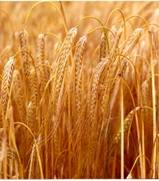
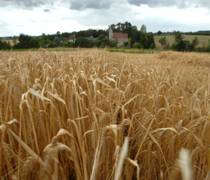
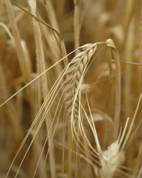
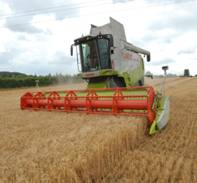
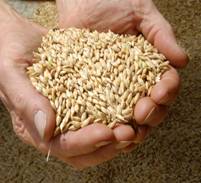
Multiple choice questions
- Centre of origin of Barley is ___________
a. America b. S. Africa c. Asia & Ethiopia - In India the highest producer of barley is ________
a. U.P b. Punjab c. W.bengal - The inflorescence of barley is called __________
a. Ear b. panicle c. spike - Most critical stage of irrigation in barley is ________
a. Tillering b. CRI c. Flowering - Barley crop needs ________
a. Cold & dry climate b. Hot & humid c. dry & hot - Photoperiodically, barley is a type of plant is ________
a. Short day b. Long day c. Day neutral - Depth of sowing of barley is
a.1-2cm b. 3-5 cm c. 5-6cm - Shoot of barley is called
a. Stem b. Culm c. Trunk - Leaf of barley is
a. Petiole b. Sessile c. both - Salt tolerant variety of barley
a. Amber b. Neelam c. RD137 - ________ variety is suitable for malting
a. Amber b. Neelam c. RD 137
| Download this lecture as PDF here |
![]()